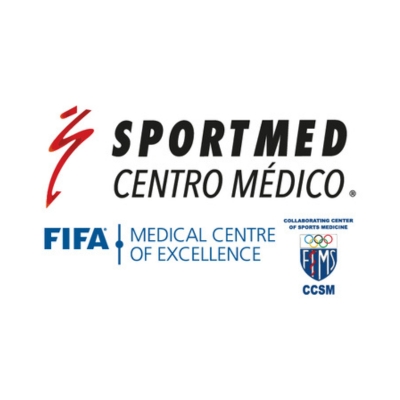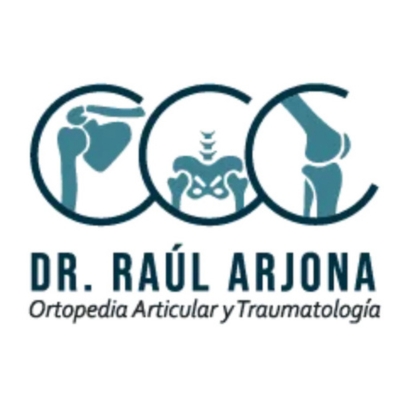Spine health is really important. Your spine helps you move and supports your body. Sometimes, people have problems with their spines. This can cause pain and make it hard to do everyday things. But don’t worry, there are treatments to help with spine problems.
In this guide, we’ll talk about different treatments you can get in Mexico. We’ll explain what spine conditions are and how doctors figure out what’s wrong. So, let’s learn more about taking care of your spine!
Table of Contents
Understanding Spine Conditions
Your spine is like the backbone of your body, quite literally. It helps you stand tall, move around, and protects your spinal cord, which is like a superhighway for messages between your brain and the rest of your body. But sometimes, things can go wrong with your spine, causing problems called spine conditions.
These conditions can vary a lot, but they often involve issues like:
- Herniated Discs: Imagine your spine as a stack of doughnuts. Each doughnut represents a spinal disc, which acts like a cushion between the bones of your spine. Sometimes, the jelly-like substance inside these discs can push out through a tear in the tough outer layer. This is called a herniated disc and can press on nearby nerves, causing pain, numbness, or weakness.
- Spinal Stenosis: Your spine has spaces through which nerves pass. Spinal stenosis is a condition where these spaces narrow, putting pressure on the nerves. This can lead to pain, tingling, or weakness in your arms or legs.
- Scoliosis: Your spine is normally straight when viewed from the front, but in scoliosis, it curves to the side, forming an “S” or “C” shape. This can cause uneven shoulders or hips and sometimes pain or difficulty breathing if the curve is severe.
Diagnosis Process
When you’re experiencing spine problems, getting an accurate diagnosis is key to finding the right treatment. Here’s what you can expect during the diagnosis process:
Medical History: Your journey toward a diagnosis often begins with a conversation with your doctor. They’ll ask you questions about your symptoms, how long you’ve had them, and if anything makes them better or worse. They’ll also inquire about your medical history and any previous spine-related issues.
Physical Examination: Next, your doctor will conduct a physical examination. They’ll check your posture, range of motion, and reflexes. They may also perform specific tests to evaluate nerve function and muscle strength in the affected areas.
Imaging Tests: Depending on your symptoms and physical examination findings, your doctor may order imaging tests to get a closer look at your spine. These may include:
- X-rays: These provide detailed images of the bones in your spine and can help identify fractures, arthritis, or structural abnormalities.
- MRI (Magnetic Resonance Imaging): This imaging technique uses powerful magnets and radio waves to create detailed images of the soft tissues in your spine, such as discs, nerves, and spinal cord. It can help diagnose conditions like herniated discs or spinal stenosis.
- CT Scan (Computed Tomography): CT scans provide more detailed images of the bones and can detect fractures, tumors, or bone abnormalities that may not be visible on X-rays.
Other Diagnostic Tests: In some cases, your doctor may recommend additional tests, such as electromyography (EMG) or nerve conduction studies (NCS), to evaluate nerve function and detect nerve damage.
Consultation with Specialists: Depending on your symptoms and test results, your doctor may refer you to a specialist, such as a neurologist, orthopedic surgeon, or spine specialist, for further evaluation and treatment recommendations.
Treatment Options
When it comes to treating spine conditions, there’s no one-size-fits-all approach. The right treatment for you will depend on factors like the type and severity of your condition, your overall health, and your lifestyle. Here are some common treatment options:
Non-Surgical Treatments
Physical Therapy: A physical therapist can design a customized exercise program to strengthen the muscles supporting your spine, improve flexibility, and alleviate pain.
Medications: Over-the-counter or prescription medications, such as nonsteroidal anti-inflammatory drugs (NSAIDs), muscle relaxants, or pain relievers, may help manage pain and inflammation.
Chiropractic Care: Chiropractors use hands-on spinal manipulation techniques to improve spinal alignment, relieve pain, and restore mobility.
Acupuncture: This traditional Chinese medicine technique involves inserting thin needles into specific points on the body to alleviate pain and promote healing.
Minimally Invasive Procedures
Epidural Steroid Injections: Injections of corticosteroids into the epidural space around the spinal cord can help reduce inflammation and relieve pain associated with conditions like herniated discs or spinal stenosis.
Facet Joint Injections: These injections deliver medication directly into the facet joints of the spine to reduce inflammation and alleviate pain caused by arthritis or injury.
Radiofrequency Ablation: This procedure uses heat generated by radio waves to disrupt nerve signals responsible for transmitting pain from the spine to the brain, providing long-lasting pain relief.
Surgical Treatments
Discectomy: A surgical procedure to remove part or all of a herniated disc that’s pressing on a nerve, relieving pain and improving mobility.
Laminectomy: This surgery involves removing a portion of the lamina (the bony arch of the vertebra) to relieve pressure on the spinal cord and nerves caused by spinal stenosis.
Spinal Fusion: In this procedure, two or more vertebrae are fused together using bone grafts or metal implants to stabilize the spine and alleviate pain caused by conditions like spinal instability or degenerative disc disease.
Innovative Treatments
Stem Cell Therapy: Stem cells derived from your own body or from donor sources may be used to promote tissue repair and regeneration in damaged spinal tissues.
Artificial Disc Replacement: This surgical procedure involves replacing a damaged or diseased spinal disc with an artificial implant to restore mobility and reduce pain while preserving spinal motion.
Advantages of Seeking Spine Treatments in Mexico
Seeking spine treatments in Mexico can offer several advantages, making it an attractive option for individuals dealing with spine conditions. Here are some key advantages:
- Cost-Effectiveness: Spine treatments in Mexico are often more affordable compared to many other countries, including the United States and Canada. This can be particularly beneficial for individuals without adequate health insurance coverage or those seeking elective procedures not covered by insurance.
- Quality Healthcare Facilities: Mexico is home to modern, state-of-the-art healthcare facilities equipped with advanced medical technologies and staffed by highly trained healthcare professionals. Many hospitals and clinics in Mexico adhere to international standards of quality and safety, ensuring patients receive high-quality care.
- Expertise of Medical Professionals: Mexican healthcare providers, including spine surgeons, neurologists, and physical therapists, often receive rigorous training and have extensive experience in treating spine conditions. Many doctors in Mexico have received education and training in renowned medical institutions worldwide.
- Accessibility and Convenience: Mexico is easily accessible from various parts of the world, with numerous international airports and well-developed transportation networks. Patients traveling to Mexico for spine treatments can benefit from convenient travel options and may find it easier to schedule appointments and procedures compared to waiting times in their home countries.
- Personalized Care and Attention: Many patients who seek spine treatments in Mexico report receiving personalized care and attention from healthcare providers. The doctor-patient ratio in Mexico may be lower than in some other countries, allowing for more time and attention to be devoted to each patient’s needs.
- Multilingual Healthcare Providers: Many healthcare providers in Mexico, especially in tourist areas and medical tourism hubs, are fluent in English and other languages commonly spoken by international patients. This can help facilitate communication and ensure that patients fully understand their diagnosis, treatment options, and post-operative care instructions.
- Combining Treatment with a Relaxing Getaway: For international patients, seeking spine treatments in Mexico can be an opportunity to combine medical care with a relaxing vacation. Many medical tourism destinations in Mexico offer beautiful scenery, cultural attractions, and recreational activities, allowing patients to recover in a tranquil and enjoyable environment.
Cost of Spine Treatment in Mexico
The average cost of spine treatment in Mexico can vary depending on several factors, including the type of treatment needed, the complexity of the procedure, the location of the healthcare facility, and the individual patient’s specific needs.
However, in general, spine treatments in Mexico tend to be more affordable compared to many other countries, particularly in North America and Europe. Here’s a rough estimate of the average costs for common spine treatments in Mexico:
| Surgical Treatment | Average Cost Range |
|---|---|
| Discectomy | $3,000 – $7,000 |
| Laminectomy | $4,000 – $10,000 |
| Spinal Fusion | $5,000 – $15,000 per level fused |
| Artificial Disc Replacement | $7,000 – $20,000 per disc |
Best Orthopedic Hospitals in Mexico
When it comes to orthopedic care, Mexico boasts several world-class hospitals known for their advanced medical technologies, skilled healthcare professionals, and high-quality patient care.
Whether you’re seeking treatment for spine conditions, joint replacements, sports injuries, or musculoskeletal disorders, these hospitals offer comprehensive orthopedic services to patients from around the globe. Here are some of the best orthopedic hospitals in Mexico
Preparing for Treatment
Preparing for orthopedic treatment in Mexico involves several important steps to ensure a smooth and successful experience. Here’s a brief overview:
Consultation with Healthcare Provider: Schedule a consultation with your healthcare provider to discuss your treatment plan, including the type of procedure, expected outcomes, and any pre-operative preparations.
Travel Arrangements: Make travel arrangements to Mexico, including booking flights, accommodations, and transportation to and from the hospital or clinic where you’ll be receiving treatment. Consider factors such as visa requirements, travel insurance, and any necessary vaccinations.
Gather Medical Records: Gather all relevant medical records, including imaging scans, test results, and reports from previous consultations or treatments. These records will help your healthcare provider in Mexico better understand your medical history and plan your treatment accordingly.
Financial Considerations: Determine the cost of treatment and make financial arrangements, including payment options, insurance coverage, and any additional fees or expenses. Consider consulting with the hospital’s international patient services department for assistance with billing and financial planning.
Pre-Operative Instructions: Follow any pre-operative instructions provided by your healthcare provider, such as fasting requirements, medication adjustments, or lifestyle modifications. These instructions are essential for ensuring your safety and optimizing surgical outcomes.
Pack Essentials: Pack essentials for your trip, including comfortable clothing, toiletries, medications, and any medical devices or mobility aids you may need during your recovery. Don’t forget to bring important documents such as your passport, identification, and medical records.
Recovery Process
Recovering from orthopedic treatment in Mexico is a crucial phase that requires careful attention and adherence to post-operative guidelines. Here’s a concise overview of what to expect during the recovery process:
Immediate Post-Operative Care: After surgery, you’ll be closely monitored in the recovery area by medical staff. They’ll ensure your vital signs are stable and manage any immediate post-operative pain or discomfort.
Hospital Stay: Depending on the type of procedure and your overall health, you may need to stay in the hospital for a few days for further observation and initial rehabilitation. During this time, healthcare professionals will provide pain management, wound care, and assistance with mobility as needed.
Pain Management: Managing pain during the recovery process is essential for your comfort and overall well-being. Your healthcare provider will prescribe medications or other pain management techniques to help alleviate discomfort and promote healing.
Physical Therapy and Rehabilitation: Once you’re stable enough, you’ll begin physical therapy and rehabilitation exercises to regain strength, flexibility, and mobility in the affected area. Physical therapists will guide you through specific exercises and techniques tailored to your individual needs and recovery goals.
Follow-Up Appointments: Attend scheduled follow-up appointments with your healthcare provider to monitor your progress, assess healing, and address any concerns or complications that may arise. These appointments are essential for ensuring a successful recovery and optimizing long-term outcomes.
Activity Modification: Follow any activity restrictions or precautions provided by your healthcare provider to prevent injury and promote healing. Gradually increase your activity level as tolerated, but avoid overexertion or activities that may exacerbate your condition.
Nutrition and Hydration: Maintain a healthy diet and stay hydrated to support your body’s healing process. Adequate nutrition and hydration are essential for tissue repair, energy levels, and overall recovery.
Ready to take the first step towards your orthopedic treatment journey in Mexico? Contact us today to learn more about our comprehensive services and start your path to improved health and mobility.








